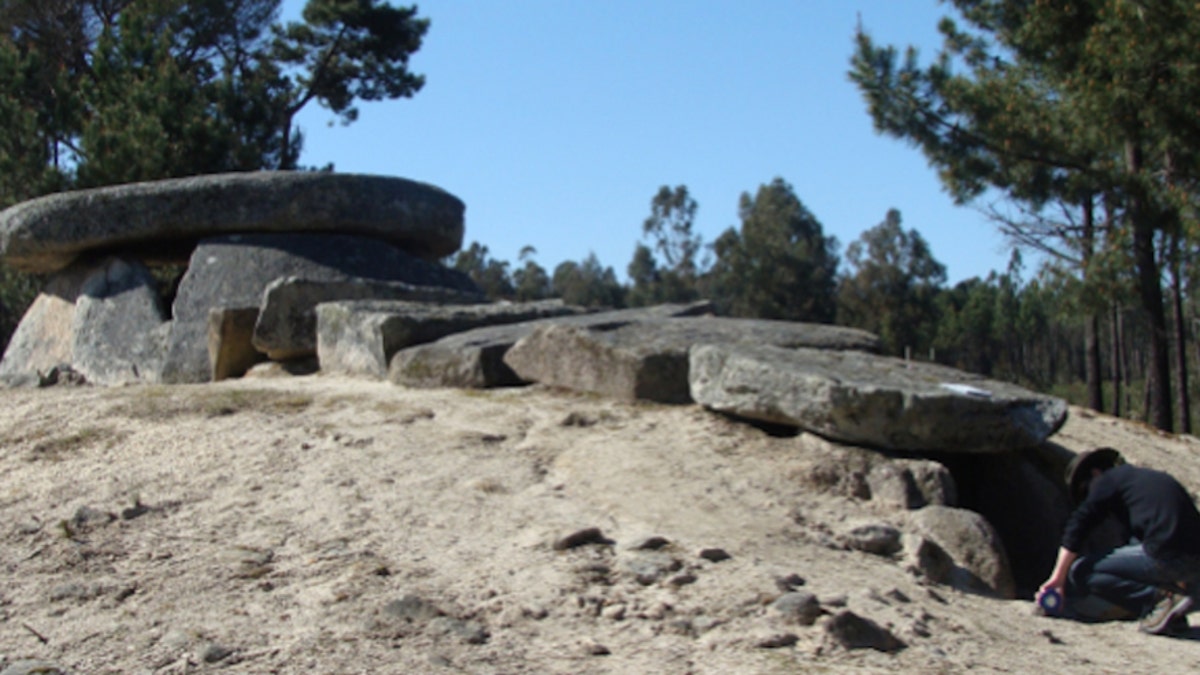
Dolmen da Orca, a typical dolmenic structure in western Iberia. (F. Silva)
Did the narrow passageways to ancient, sacred tombs actually serve as the first telescopes? Research conducted by a team of astronomers suggests so, citing a 6,000-year-old tomb in Portugal as evidence.
The study was presented at last week's National Astronomy Meeting in Nottingham, U.K.
To arrive at this conclusion, the team looked at how a basic aperture, such as an opening or doorway, might affect the observation and view of slightly fainter stars from the vantage point of the long, narrow entrance passages to ancient stone, or ‘megalithic’ tombs.
Fabio Silva of the University of Wales Trinity Saint David, explained that the tombs might have been originally been aligned with Aldebaran, which is the brightest star in the constellation of Taurus. The star must be observed during the twilight hours in order to accurately time its first appearance in season, according to the team.
The team suggests that the entrance passages to the tombs may have enhanced what early human cultures could see in the night sky. And this effect could have also been interpreted as ancestors granting special powers to the initiated.
According to the team, for an ancient observer, the return of a particular star after a hiatus in the night sky could have served as a seasonal marker, or as signaling migration to summer grazing grounds. In order to gain the insight, some believe, the observer would have to spend the night in the tomb among the ancestors. However, others believe it was possible to see the stars with the naked eye from the entrance passages of the tombs.
In addition, the team examined how the naked eye might see stars with respect to their brightness in the sky or color.
Daniel Brown of Nottingham Trent University, said the latest finding, "highlights the cultural agenda within astronomy, also recognised by the inclusion of aspects of ancient astronomy within the GCSE astronomy curriculum."
